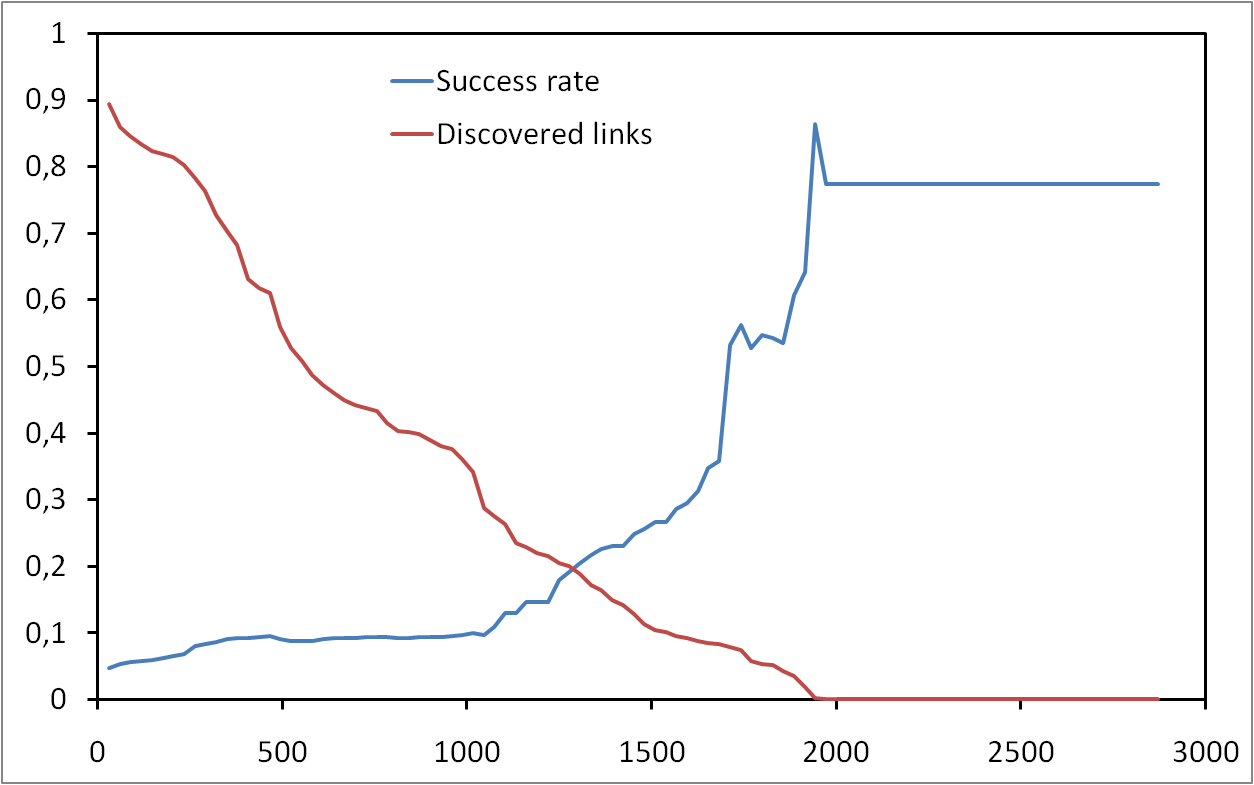Oussama Allali, Lionel Tabourier, Clémence Magnien, Matthieu Latapy
Social Network Analysis and Mining, March 2013, Volume 3, Issue 1, pp 85-91.
Many real-world complex networks are best modeled as bipartite (or 2-mode) graphs, where nodes are divided into two sets with links connecting one side to the other. However, there is currently a lack of methods to analyze properly such graphs as most existing measures and methods are suited to classical graphs. A usual but limited approach consists in deriving 1-mode graphs (called projections) from the underlying bipartite structure, though it causes important loss of information and data storage issues. We introduce here internal links and pairs as a new notion useful for a bipartite analysis, and which gives insights on the information lost by projecting the bipartite graph. We illustrate the relevance of theses concepts on several real-world instances illustrating how it enables to discriminate behaviors among various cases when we compare them to a benchmark of random graphs. Then, we show that we can draw benefit from this concept for both modeling complex networks and storing them in a compact format.

